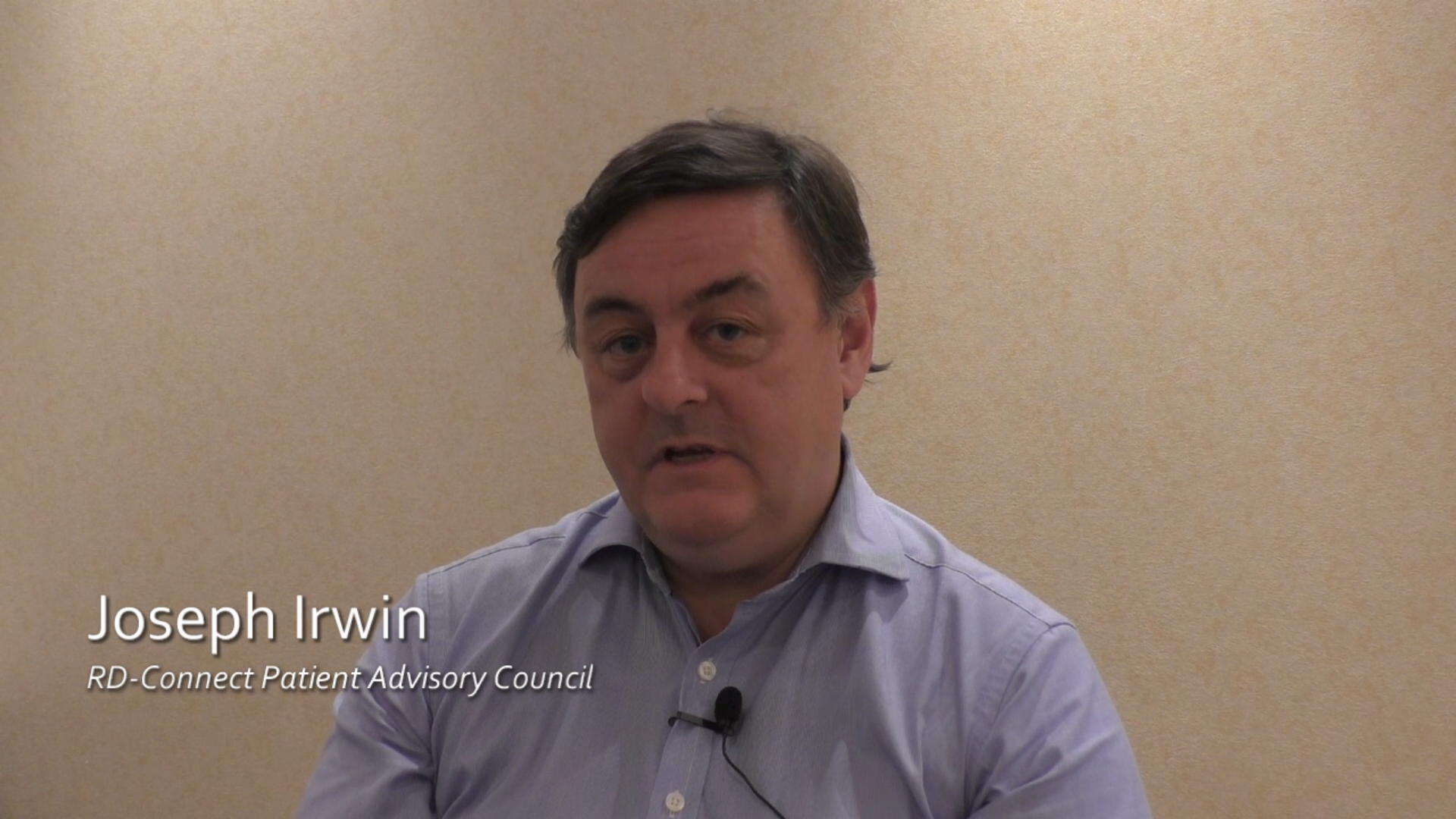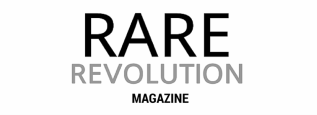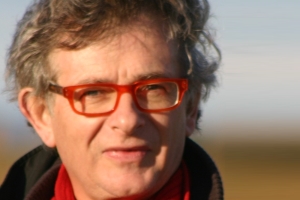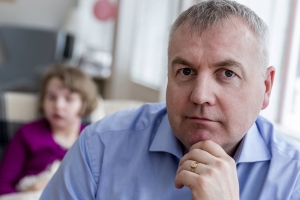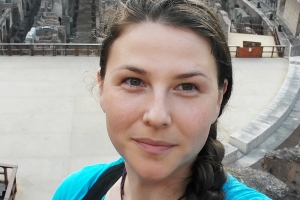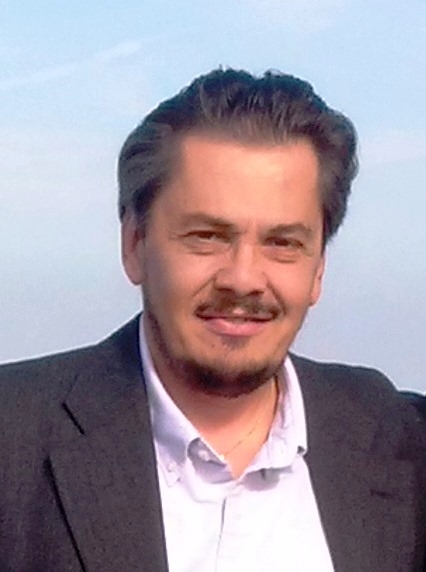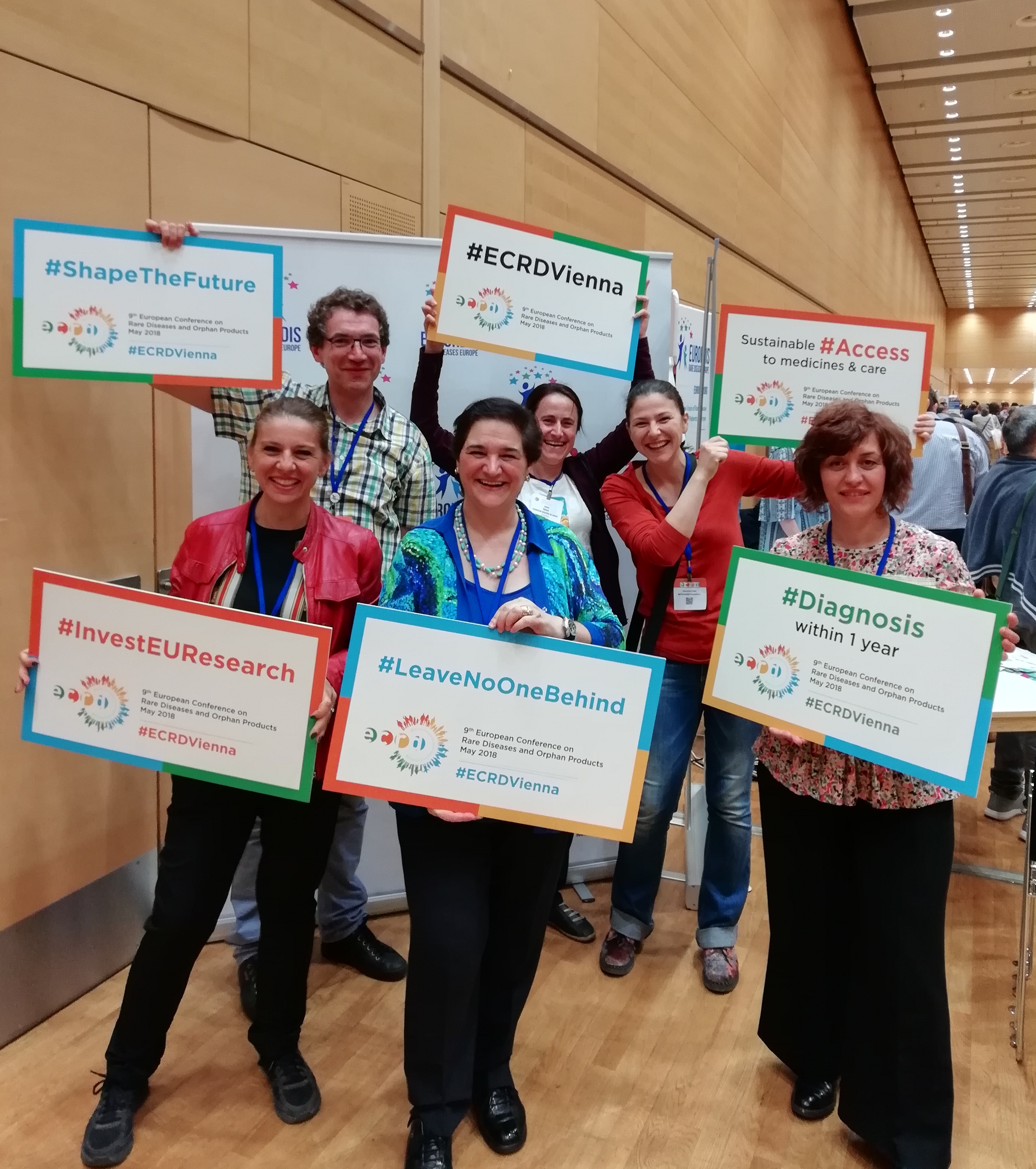Even if you create the best software or database, it could rapidly turn useless if you do not have access to data. Patients own their data, which are key to build databases etc. Clinicians and geneticists also have access to complementary data about patients. This information can only be used if patients give their consent. Patients organizations are key actors to explain to the public what are the purposes of the research projects and why they should give their consent to feed the bioinformatics databases with key data.
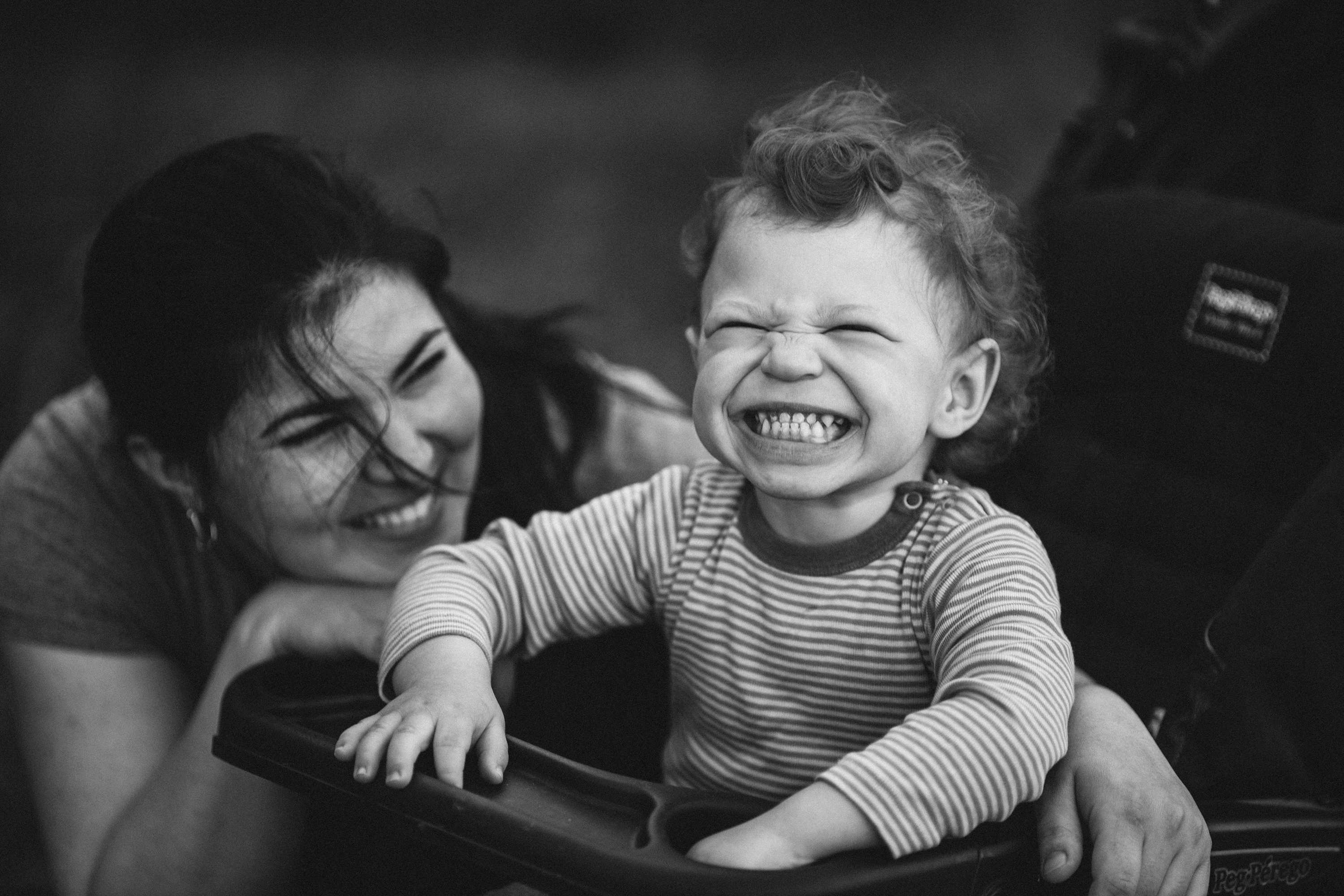
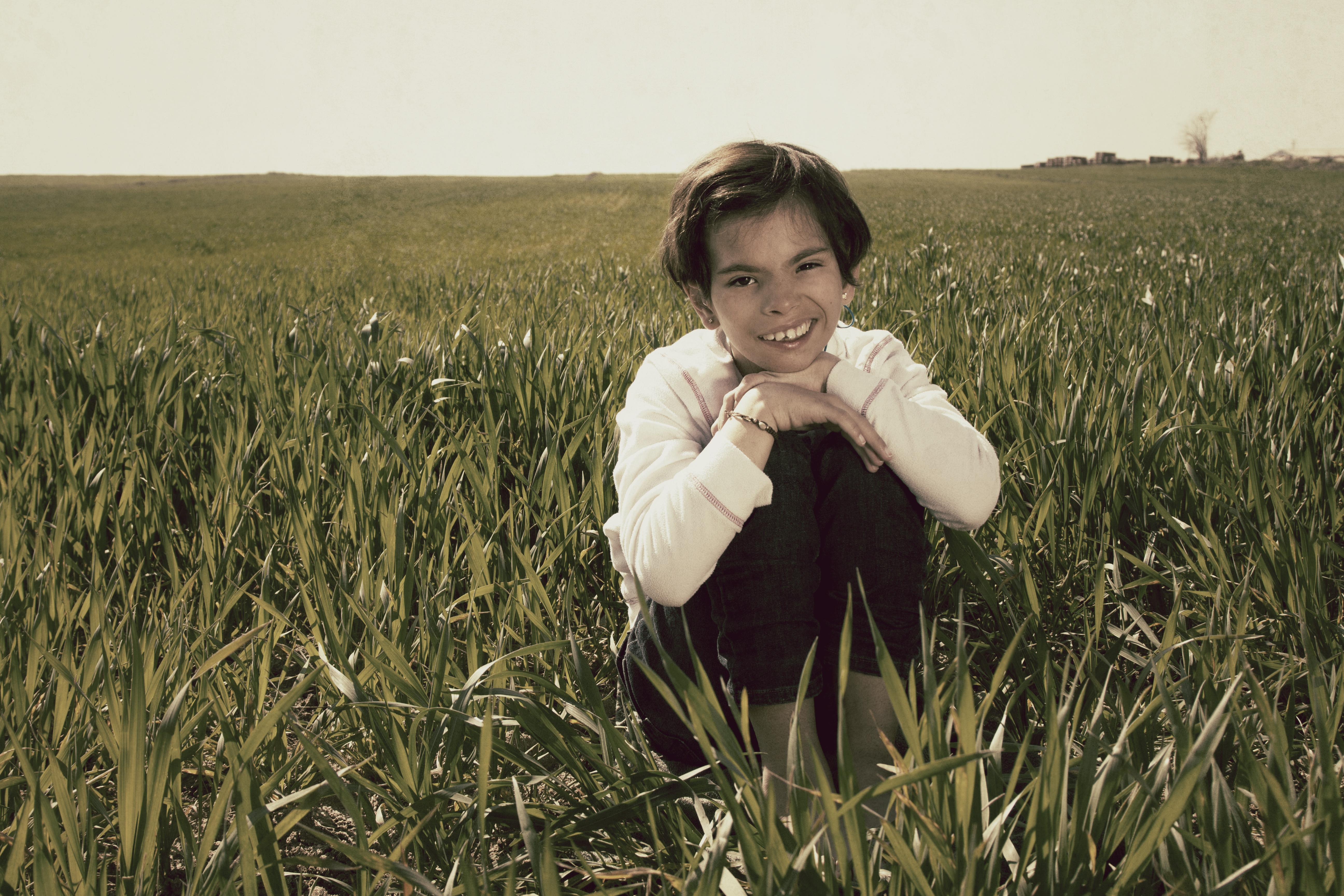
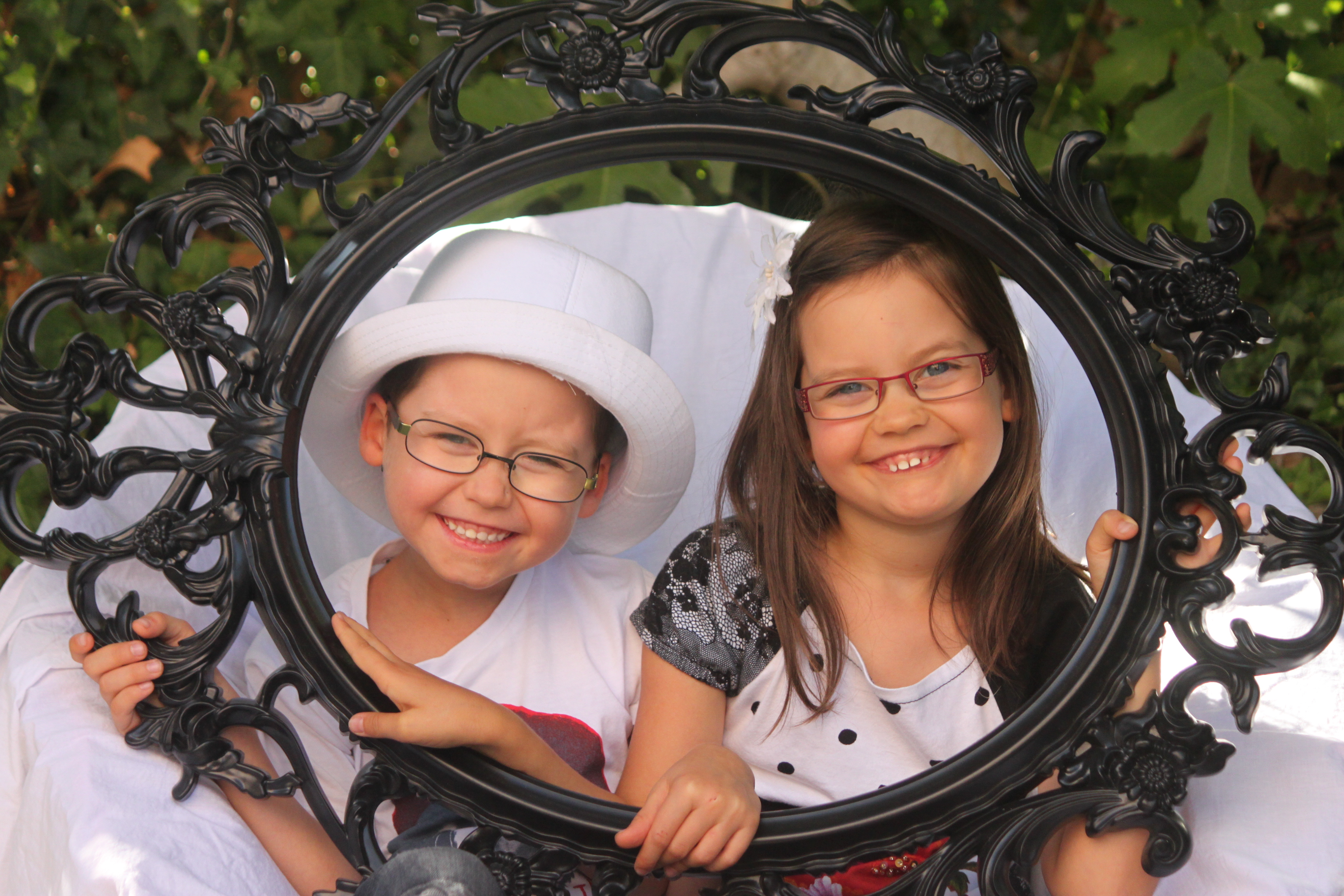
Patient representatives have a lot of knowledge about rare diseases. RD-connect uses this experience to help guide the research process. Rare disease researchers understand how important it is to reach better health outcomes, which improve with new approaches and creative thinking. Trusted and ethical practices are vital as well.
Input of patient representatives into RD-Connect activities is managed by EURORDIS through the Patient Advisory Council (PAC) and Rare Disease Patient and Ethics Council (RD-PEC). PAC and RD-PEC provide guidance on the project’s direction, particularly in ethically challenging areas relating to data sharing, where risk and benefit must be carefully evaluated.
Members of the PAC engage with each of the RD-Connect technical work packages, which lets the technical experts get direct input from the PAC and strengthens the involvement of the PAC members, and improves dissemination of the project’s work to the wider rare disease patient community.
Wish to know more? Read our Introduction to rare diseases to learn more about why data sharing is crucial for improving the lives of rare disease patients.
For an overview on how RD-Connect addresses the rare disease challenge, read the article about RD-Connect published by the Rare Revolution Magazine.
You can also watch the EURORDIS webinar explaining what RD-Connect is, how it works and how it benefits patients with rare diseses. Watch the webinar!
The articles below were written by the members of the Patient Advisory Council and concern topics that they find important for patient engagement and advancement of rare disease research. The articles were first published in April 2017 in the Issue 29 of the RD-Connect newsletter.
- Interview with Christophe Beroud, the leader of RD-Connect work on clinical bioinformatics
- Developing a European Reference Network from the perspective of a European Patient Advocacy Group representative
- Visual awareness in rare diseases
- Crash Course in Patient-Researcher Communication
- Reactions to the Report from the EMA Workshop on Patients Registries
- Basic considerations to ensure sustainable patient & researcher partnerships
- How to explain genetics and bioinformatics to your grandmother
- Patient registry governance vs The Lords of the Rings
- ECRD 2018: Testimonies from PAC members
- Recommendations to create Rare Disease Registries
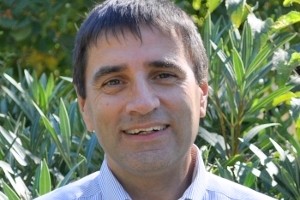
Prof. Christophe Béroud leads the centre for molecular diagnosis of Congenital Muscular Dystrophies (MDC1A) and a bioinformatics team at the Aix-Marseille University Medical School.
I am a self-made bioinformatician as I discovered the first computers with friends during my first years at university. I found that my skills as a chess player were a strength to create algorithms. I therefore started to create software to facilitate my day-to-day job as a hospital pharmacist. I discovered that genetics were generating more and more data and that databases and tools were required to efficiently store those data and extract knowledge from them. I created the UMD system that rapidly became an international reference. Since then I created many other databases and tools and became leader of a reference bioinformatics team.
Daniel Renault is actively engaged in French and European associations for patients affected by Renal Genetic Diseases. Within RD-Connect, he is involved in patient engagement and ethics. In this interview, he talks about developing the European Rare Kidney Disease Reference Network (ERKNet) from the perspective of a European Patient Advocacy Group (ePAG) representative.
The approach of the ERNs, has been widely discussed since 2012 in a multi-stakeholder committee (EUCERD) where patients were represented. I would like to take this opportunity to recall the decisive influence of the patients in the process through EURORDIS.
ERNs are aiming at “quality of healthcare pathways for all” within the EU. This is about solidarity, “for all” and efficiency, improvement of quality. We are thus dealing with a double process: on the one hand to extend and on the other hand to improve healthcare pathways; and the two feed on each other.
But the project is useful for all patients in Europe. First, it will improve knowledge of what constitutes a quality healthcare pathway, by better integrating the voice of patients. It is known that the quality of life of patients with renal insufficiency is critical to the balance of their lives and their development when they are young. Beyond the potential development of innovative techniques to treat or delay the degradation of renal function, there are aspects such as access to treatment for renal insufficiency (dialysis, transplant) that are critical in the care and health. They are at the heart of ERKNet.
It will also bring about a strong integration between research, clinical, genetics, and the treatments of new generations. By better linking patients and expertise among themselves, the conditions for the emergence of an effective infrastructure are created, enabling research to build on critical masses of patients with standardized clinical information and biobanks of sufficient size.
In the field of kidney rare diseases, we were fortunate to have already a single organisation (FEDERG federation) that covers the entire domain of ERKNet. For some other networks, integration is less easy due to a high number of associations that have no experience of working together. This advantage has enabled us, as early as 2015, to be proactive in bringing together all the European associations in the rare renal domain without waiting for the Commission’s directives.
FEDERG, on behalf of the patients, thus contributed to the development of the ERKNet project with the nephrologists. In the implementation of the project, our involvement will focus in particular on the characterization of the pathways, the transition protocols (child-adolescent-adult), the aspects followed of the impacts in countries with the patients, the ethical aspects, the development of patient capacities in safety and quality of care studies and development of research infrastructure (registries, biobanks). And of course our role will be to consistently ensure a strong and reactive link between the patients in the field and the management structure of the network.
We are therefore involved from the start on the ERKNet project, first as FEDERG and then more formally from the angle of the E-Pag. The E-Pag is the European Patient Advocacy Groups, which formalizes patient participation in the network process. Elections of patient representatives in ERKNet took place in spring 2016: Claudia Sproedt and I were elected representatives (respectively vice president and president of FEDERG).
I have to say that FEDERG is active in many other fields (research projects, forum, establishment of good practice guides, participation in EURORDIS (Rare Diseases Europe) and RDI (Rare Diseases International). ERN is today and for years to come a central activity for us.
It was necessary to go fast because the texts of the call for projects were issued at the end of 2015 and it was necessary to propose a project in June 2016.
Another critical element is that the implementation of the ERNs is not associated with any specific funding measure. The activities will have to be financed by the Member States. This absence must be seen as a guarantee of the sincerity of the institutes involved, the motivation for participation is not financial but aims to genuinely contribute to an integrated European project.
At FEDERG and ePAG level, we have organized the first E-PAG meeting of associations the 5th March 2017 in Amsterdam. 28 representatives gathered. And now we are ready to have patients participating to almost each thematic subgroup and task force of ERKNet. We are heading towards the official launching of ERKNet planned 23 and 24 May 2017 in Heidelberg.
Sigurður Hólmar Jóhannesson is the founder of Alternating Hemiplegia of Childhood (AHC) associations of Iceland, and Europe, and is a member of the RD-Connect Patient Advisory Council.
If you want to grab the attention of a large number of people don´t make the video too long. In 2015 the average length watched of a single on-line video was 2 minutes 42 seconds.
Surveys indicate that 60-second video´s are the best for maximum viewers.
If also helps to send the video to online press and internet celebrities.
Eurordis has a channel that has a wide array of short films and you can send your video to the channel.
The AHC association of Iceland produced a few short films about Alternating Hemiplegia of Childhood (AHC) AHC is a rare neurological disorder that is extremely complicated and difficult to explain in words.
The short films helped people all over the world to get a correct diagnosis and to explain the disease to friends and relatives. This inspired the association to create a full documentary about AHC called Human Timebombs.
The documentary not only helps families that live with this devastating disorder but also helps to raise awareness, raise funds and is used for educational purposes for healthcare professionals and teaching hospitals in Europe and in the USA.
As it was difficult to get all the 70 interviews into the documentary a special website was created so that all the information could be stored in one place because information on rare diseases are extremely valuable to families as well as professionals.
The AHC Association of Iceland gets emails every week with stories explaining how the documentary has helped families all over the world and receiving such news is always heartwarming.
Creating a video has never been easier almost to the point that anyone can create a video. The only limit to the creativity is your imagination. Professional video´s are the best but sometimes raw material can be very powerful if the emotions can capture the audience.
Rare diseases that are difficult to explain are perfect for visual awareness.
Veronica Popa is a mother of a child with Allan-Herndon-Dudley syndrome (AHDS) and a passionate advocate for her son’s condition. She is a member of the RD-Connect Patient Advisory Council (PAC).
“The smallest piece of knowledge about rare diseases might be the grain of rice able to tip the scale in favor of us all.”
Communication is simple in theory but way more complicated in reality. In a verbal communication, a simple schematic would be: sender, encoder, channel, noise, message, decoder and receiver.
The Sender:
I’m a mother of a rare disease patient and I have studied and applied marketing and communication for a lot of years. Why is this relevant to this article? Because information is only as valuable as the source is qualified to express it. You wouldn’t take medical advice from a lawyer, would you?
The Encoder/Decoder:
When considering verbal communication, the encoder is the language we speak. The best communication results come when the decoder uses the same code as the encoder. It’s obvious that if you are speaking English and the other person is trying to decode your message in French, the message will be lost.
Less obvious but just as damaging for the message are situations in which the two, sender and receiver, are using slightly different codes. If the sender encodes his message in technical English, for example, while the receiver decodes it in plain English a big part of the message will be lost or miss interpreted (like the English-Romanian version). It’s like being on the right wavelength (AM/FM) but the wrong frequency (101,2kHz rather than 101,4kHz).
The Channel
If you are having a face to face conversation then the channel is the voice. Sometimes, the channel may have a vital role in delivering the right message. The more sensitive the message the more direct the channel should be.
The Noise
Noise is the thing that usually gets the message scrambled so that it may end up meaning a totally different thing at the other end. It might have to do with cultural differences, semantic of the words used etc. An example of cultural difference would be interpersonal distance. Interpersonal distance is different from culture to culture. From Northern to Southern Europe, the distance decreases abruptly. Staying too far or too close to a person may make the person receiving the message uncomfortable and that interpretation may leak into the meaning of the conversation.
The Message
Transforming complicated concepts into bite size information that the patients may understand and absorb should be a key point in developing a message. Some ideas to reach that goal might include:
- Use visual metaphors in order to create a visual memory of that information
- Make analogies to familiar concepts for the receiver
- Be concise
- Keep in mind the other’s point of view.
The Receiver:
In patient-researcher communication, the different perspectives of the two (Sender and Receiver) may account for a big chunk of the misunderstandings. For the researchers, the subject in discussion is related to their work so it’s professional. For the patient, the same subject is deeply personal due to the fact that it affects directly their lives. The solution would be a middle ground where both sides would feel comfortable sharing ideas. It might require a bit of empathy from the researcher and a bit of detachment from the patient and a lot of good will from both.
Communication is a very complex process. Verbal communication is only a small part of the way we communicate and is not even the most efficient. Research shows for example that our brains are wired to interpret body language first and to compare that message with the one received verbally. While body language may differ from culture to culture, the approval/disapproval body language is universal.
People might show signs of mistrust, even without understanding why, when the two kinds of communication don’t harmonize. For example, if someone says “We are extremely enthusiastic about this new treatment” while their arms are crossed across their chest, your brain will tell you to temper your enthusiasm since what he is saying might not be the full story.
Arms crossed across the chest represents a defensive gesture but is done unconsciously and the brain trusts it better over the conscious messages which are the verbal ones.
Communication is never a one way street. Both sides should listen as well as try to convey their message. It is also good, in cases where complex concepts are being communicated, to ask questions in order to assess the efficacy of the communication strategy used.
“Research is vital for rare diseases”. This is not a metaphor; this expression is as pragmatic as they come. It is a mantra that every patient or parent or a rare disease child starts absorbing in from the first second they find out their diagnosis. Understanding this makes them all willing to help and do their part to further this process. Sometimes though, bad communication gets in the way and walls are being built instead of trust. If we could rise above our fears, mistrust and personal agendas; if we could build bridges instead of walls, we could aim higher, way…way higher.
Each of us, patients or researchers, holds a piece of the puzzle. We won’t be able to see the whole image unless we work together and give each other a chance to share even the smallest piece of knowledge that might prove to be the grain of rice that will tip the scale in the favor of us all, researchers and patients alike.
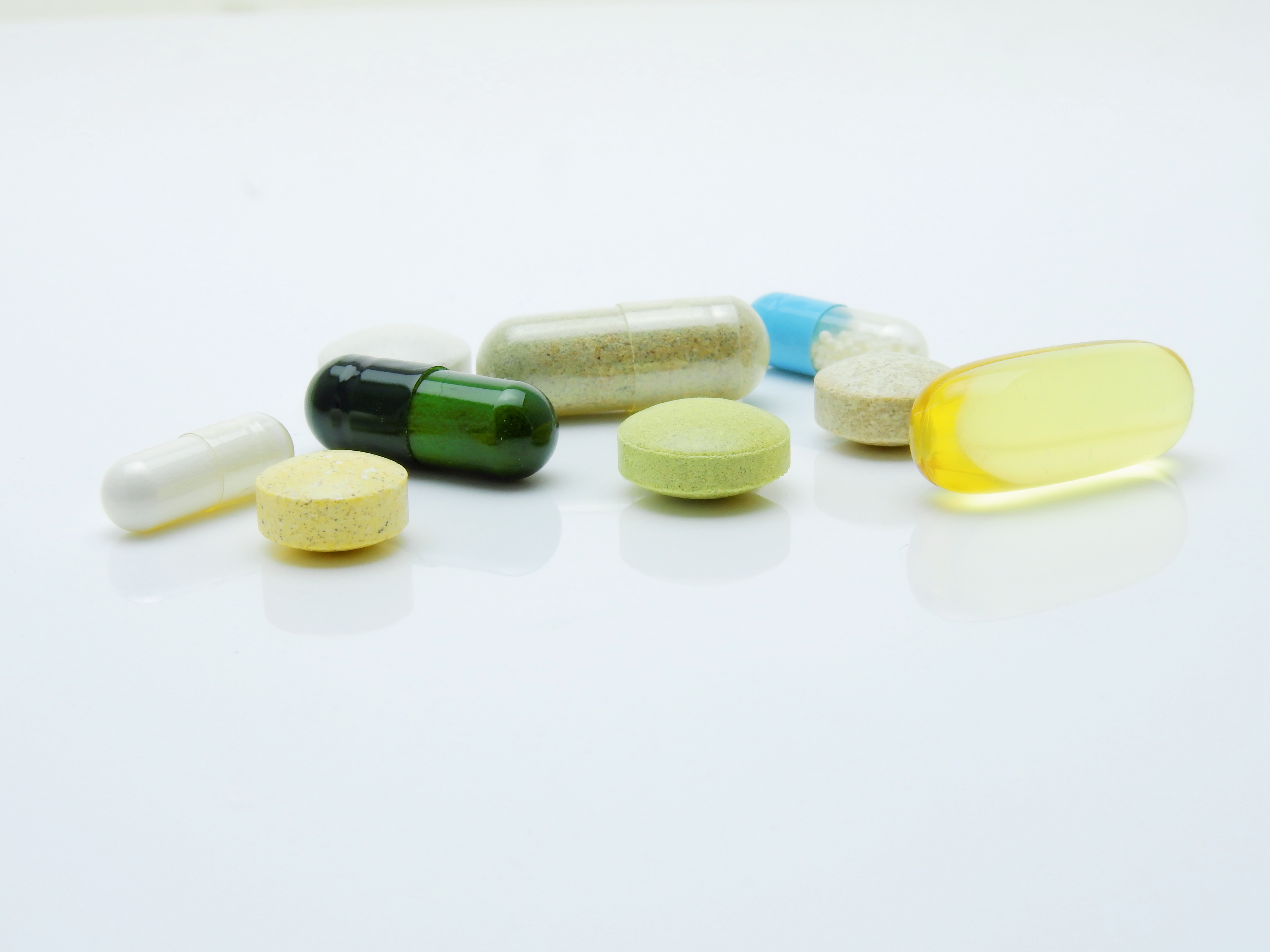
In 2014, the European Medicines Agency (EMA) commenced a Registry Initiative aiming to optimise the use of registries in supporting medicines authorisations. Engagement between marketing authorisation applicants and registry holders requires establishing a strategy and a supporting task force. An undertaken pilot phase aimed to identify the barriers and enablers and to develop recommendations to optimise the use of registries in marketing authorisation. The perspectives of multiple stakeholders including registry holders, patients, the pharmaceutical industry, health technology assessment representatives and regulators were then explored in the EMA Registries Workshop held on the 28th October 2016. Participants described the challenges and barriers to collaboration, and made recommendations to address them and to develop the next steps of the EMA Registry initiative.
The report from the workshop sets out participants’ observations and recommendations in five theme areas: benefits of patient registries and obstacles to be overcome, benefits and challenges of collaborations, technical considerations, governance, and sustainability.
Members of the RD-Connect Patient Advisory Council have followed the EMA patient registry pilot project during the last two years.
Patient organisations are very interested in the final outcome in the use of registries specifically for regulatory approval, and whether new applicants will implement disease based registries instead of product registries.
As patient representatives, we have often stressed the importance of integrating patient perspectives in the regulatory approval process – not only the patient preferences but also what is clinically important for us, through the various Clinical Trial mechanisms like primary endpoints etc. With the new concept of these registries we could take a step further towards the collection of Real World Evidence about what works, by how much it works and for whom it works best.
So it becomes essential for all of us to develop the proper robust governance to safeguard transparency, accessibility of data and independence of registries.
Disease registries and post-authorization pharmacovigilance
EMA requires pharmaceutical laboratories to monitor, using product registries, the safety of their medicinal products after market authorization to track large-scale adverse events that could have gone undetected through clinical trials. However, more and more pathologies are endowed with an epidemiological patient registry whose aims include a better understanding of the natural history of the disease and the clinical characteristics of the population.
Within its Registry Initiative, EMA wants to encourage Pharma companies to switch from using Product registries to Patient registries in their pharmacovigilance studies. With this in mind, EMA invited stakeholders to feedback on the report summarising the observations and recommendations arising from the Registries Workshop This is a tremendous opportunity to improve quality of disease registries while helping to evaluate new drugs, so important in rare diseases.
Registries represent an invaluable source of data especially in the field of rare diseases as they can for example help assess the feasibility of a study by evaluating the number of patients eligible for a clinical trial.
Registries-Pharma partnerships could provide funding to registry managers for a given period of time. These should be considered as a bonus, an extra ad-hoc support to help improve the quality of registries and facilitate compliance with good clinical practices, rather than being the main funding provider. Setting up a drug registry requires the pharmaceutical laboratory to respect these good clinical practices, it is therefore likely that the EMA will also impose it on patient registries.
New ways for Patient Organisations to Contribute to Drug Evaluation
In 2011, the importance of the role of associations in the health system was reaffirmed by the French national Agency for drug safety. The law reinforces transparency and puts the patient at the heart of the process that ensures his/her safety. Approved patient organisations can report suspected adverse reactions. They can put a request to the Agency recommending the temporary use of a medicinal product before its marketing authorization when clinical trials showed a significant efficacy and no or limited adverse events. This is particularly important in the field of rare diseases where few drugs are available. Some patient organisations are members of the board of directors and of the three advisory committees. A specific Agency committee provides an ongoing dialogue on cross-cutting issues with patient and user organizations.
The Agency also encourages through annual calls for projects, competitive and independent associative initiatives aimed at promoting the good use of medicines.
In 2016, the French Health Authority implemented a tool allowing patient organisations to give their opinion on a medicinal product before its market authorization.
See also, this short song/animation encouraging patients to report adverse side effects due to medication after marketing authorisation.
Chris Sotirelis, himself a patient with beta thalassaemia major has been representing his community, tirelessly advocating on behalf of EURORDIS and rare diseases. By profession, he is an Air Transport Engineer. Chris is a member of the RD-Connect Patient Advisory Council (PAC) and Patient and Ethics Council (RD-PEC).
The continued growth and acceleration of research into rare diseases relies on sustainable partnerships between researchers and patients. There is growing consensus about the crucial role of patient involvement in research, which can improve the value of healthcare research.
There is an overarching ethical mandate for patient participation in research as a manifestation of the “democratisation” and equity of the research process. Patient engagement in the planning and execution of research can also improve its translation into clinical practice as centring research and innovation development closer to patient’s needs, experience and knowledge, optimises the clinical effectiveness of new interventions and ultimately improves outcomes for patients.
The role of patients in research can range from a passive one (patient is a data point) to an active one (patients shape research). Their active participation in research depends on sustainable partnerships between patients and researchers that can potentially lead to improvement in the credibility of results (higher rates of enrolment and retention), and in their direct applicability to patients (by researchers asking pertinent questions about patient-important outcomes).
In order to build and reinforce these partnerships, current practices need to evolve. The basis of a successful patient research partnership requires both the ability of researchers to engage meaningfully with patients and their ability to contribute proactively with researchers.
Active engagement in research
Patients can be involved in all phases of the research process –from research agenda setting and research design to evaluation and dissemination of results. But in order to make their involvement more effective, it has to be more than a consultation or membership in a committee. Ideally, it should be based on a true partnership where patients and researchers take decisions jointly or delegated power, where patients take full responsibility for at least part of the decision-making process.
Professionals still determine whether or not and in what way the inputs of patients are used. This belies the fact that researchers in most cases do not have direct access to patients but usually gain access to patients through their relationships with clinicians. In effect this places the patient in a passive position. This is however slowly changing.
Ultimately, achieving true translational research means that most research questions need to evolve from being excessively focused on basic science and increasingly consider the true needs of patients.
One way to implement this is developing mechanisms that foster patient involvement at all stages of research and development. By ensuring that patient representatives play an active role in key oversight bodies and governance structures where they can contribute to decision making and become involved in shifts in decision-making power to patients.
A key example of this in practice can be seen through the Patient Advisory Council of RD Connect. The role has evolved throughout the project, although the title suggests they have an ‘advisory’ role, in practice the PAC members are embedded into the different activities and work packages and are therefore not just an external group of advisors but directly contribute to shaping the directions of the project activities (see below).
Examples of patient engagement in RD Connect:
- A patient representative and chair of the Patient Advisory Committee (PAC) is a member of the Executive Management Committee of RD-Connect
- Patients critically review and input into publications on improving quality of RD patient registries
- PAC member as a member of the Biobank Assessment Panel
- Active role in communication & dissemination of project outcomes
Privacy and transparency
Increasingly accelerating research into Rare Diseases will rely on using global networks, with new technological advances, making it easy to share and distribute data, bringing existing collections together and reusing them for new purposes. Genomic research is now carried out by interdisciplinary teams of specialists brought together in flexible research collaborations. They are able to process and analyse vast amounts of information and large numbers of samples.The increasing global reach of such research networks, funded by large international consortia within Europe and the United States, requires the development of governance systems that are designed accordingly to ensure that participants’ privacy is protected and public trust is maintained.
An example from RD Connect:
Patient representatives are members of the Patient and Ethics Council that gives guidance on ethical, social and participatory issues related to the activities of RD Connect and its partner projects.
Issues of trust and transparency around the storage and use of patients’ data can undermine patient-researcher partnerships in the long-term. It is therefore important to ensure that participants’ privacy is protected by designing research projects according to ethical, legal and social norms (ELSI). In this way, the concerns of participants are addressed while at the same time ensuring effective data sharing that allows the translation of new knowledge into beneficial new therapies.
To ensure more high quality research and successful translation of the results into tangible clinical or patient benefits rare disease research must rely on sustainable partnerships between patients and researchers where patients who are actively engaged and valued as equal stakeholders in the process and are therefore motivated to continue shaping, guiding and contributing to meaningful research.
Chris Sotirelis, PAC member and EURORDIS advocate & volunteer
Veronica Popa is a mother of a child with Allan-Herndon-Dudley syndrome (AHDS) and a passionate advocate for her son’s condition. She is a member of the RD-Connect Patient Advisory Council (PAC).
Imagine HUGE cook book with thousands, even millions of unique recipes. They are all different, very particular recipes. Only the one who holds the entire book may use the recipes. Some people may take out a couple of pages, read them, analyse them but they cannot reproduce the complete recipes.
This unique book is locked inside each and every one of us and it’s called DNA. Our DNA holds the “recipes” for every molecule in the body, every protein, everything. The recipes in this book have a special name. They are called “genes”. Each recipe however, needs ingredients. The main ingredients, the building blocks for these recipes, are the amino acids. Have you ever wondered why you have brown eyes or why your hair is curly? That’s because that’s what’s said in the recipe and nothing can deviate from the recipe book.
The interesting thing is that all these amazingly unique recipes are made with just four main ingredients: Adenine (A), Cytosine (C), Guanine (G) and Thymine (T). Taken separately, they are just chemical compounds. Together however they literally build life. Anything from bacteria to mammals have their cook book written with these four chemical elements. The elements are embracing each other creating the well-known double helix. These pairings (known as base pairs) are predictable. Scientists now know that a G will always embrace a C, while a T will always hug an A and no matter which side they read, they will still be able to understand the “recipes”.
The beauty and efficiency of the DNA does not rely on the uniqueness of its compounds. What it does rely on is the way these elements alternate, their order or, in other words, their sequence. Sometimes, the complexity of the organism depends on the length of its DNA. Bacteria may have a couple of millions base pairs (“embraces”) but a more complex organism like the human organism, will have billions of base pairs.
Now, imagine you need to write this unique succession of letters on a piece of paper without making any mistakes. The paper would probably be tens of kilometres long written in very small hand writing. Just to make things more interesting, you now also need to compare what took you just about two weeks to write down with another similar paper in order to spot the differences. Some of these genetic differences may be of no consequence, some others however might make a life and death difference to some people so no pressure…
Bioinformatics
Bioinformatics for rare diseases
As we know, no two cook books are identical, (except in the case of identical twins). So we start from the presumption that there are differences. Understanding which genetic differences may cause a disease and which are the ones that have no direct consequence on a person’s health, like the color of your hair, is a very complicated thing to do.
Is your head spinning yet? Because this is not even the hard part. The hard part comes when you realize that not only the presence of a gene variant (mutation) may cause a disease but also the absence of a gene and that not all diseases are caused by a unique gene. There are genes that “turn to the dark side” only when another gene or group of genes are expressed or, on the contrary, deleted.
Other genes may impact a person’s health according to their gender. A boy and a girl having the exact same mutation could result in the girl being perfectly fine and the boy fighting for his life. As we have two kinds of sex chromosomes (X and Y), mutations can either be X-linked or Y-linked. X is the female chromosome while Y is the male chromosome. A female will have two X chromosomes (XX) while a male will have one of each (XY).
Let’s take X-link related diseases for example. In some instances, if a female has an affected X chromosome, the other X chromosome will take over and she will not be affected. She will most probably have no symptoms; she might not even be aware that she is a carrier of the mutation. However, if a male has a mutation on the X chromosome, as he only has one, he will be affected. This is the case of X-link recessive diseases like: Hemophilia, Fabry disease or Allan-Herndon-Dudley syndrome.
It is also important to keep in mind that a person may be unlucky enough to have several disease causing genes so just because you found one significant difference doesn’t’ mean that you can stop searching.
The process of understanding how gene deletion or the presence of a gene variant or mutation, as well as the interactions between different genes can cause a rare disease is quite complicated and extremely time consuming. However, the one thing that severely ill patients don’t have is time. This is where bioinformatics comes in. An informatician can take all of this data, place it in a computer and write a hugely complicated code that is capable of analyzing large sets of genetic data in this way.
Of course, this is a simplification of the role of informatics. Bioinformatics tools help researchers to better understand their own science. It allows them to simulate a 3D version of a protein, to understand its shape which comes from its purpose rather that see a bunch of letters on a paper and try to extrapolate what the connection between shape and purpose is. For example, certain amino acids don’t like water, the so-called hydrophobes, and it would make sense for them to be inside the protein and not on the surface where contact with water is inevitable. This is where being able to create a 3D model of an entire protein is useful to be able to identify where the surface is.
Bioinformatics is a field of rapid developments that may help shed light and bring certitude to countless scientific aspects on the genetic origin of some diseases, that until now have only been deducted or intuited. It has also sparked a new era in medicine by bringing genetic diagnostic closer to patients. This makes a huge difference to people affected by genetic disorders particularly in the context of the new wave of research into gene therapies. It also helps scientists to better understand the book of recipes and eventually create new ones.
Even though this article doesn’t even begin to scratch the surface on Bioinformatics I hope that, at least, it made you curious enough to want to know more about it.
Veronica Popa is a mother of a child with Allan-Herndon-Dudley syndrome (AHDS) and a passionate advocate for her son’s condition. She is a member of the RD-Connect Patient Advisory Council (PAC).
Let’s entertain for a bit the crazy idea that building a registry is a bit like “The Lord of The Rings” saga, with slightly less violence and a ton more paperwork.
Starting a registry begins with identifying the need for a registry, followed by deciding on the objective of the registry. In rare diseases the need for a registry arises from the general lack of knowledge on the rare diseases. It is estimated that there are around 7000 rare diseases with new ones being discovered every year, some of them with as few as a handful of patients all over the world. This is why patient registries are the building blocks of understanding rare diseases. By finding unforeseeable connections between them, understanding the mechanisms of the diseases we could, ultimately, build the capacity to research for cures. According to the existing level of knowledge and understanding of the particular rare disease we are considering, the objective of a registry may vary from building basic knowledge (Ex. creating a natural history of the disease); to patient recruitment for medical trials or pharmacovigilance (assessing the safety) of a particular treatment. In Lord of the Rings the objective to destroy the ring springs from the sensible desire to avoid annihilation.
Can you imagine how Lord of the rings would have played out without a ring? Everything revolves around the ring in one way or another and this is how things should happen in building a registry as well. No action should be independent but related and supporting the objective.
Now that the main characters have identified the objective, they need to find allies, in other words, stakeholders, people interested in getting involved in reaching this objective. The council of Elrond was essentially a stakeholder’s meeting, much like those needed to create a registry. A meeting in which all interested parties in reaching that particular goal met and discussed their ideas on how to best reach it; in which every free race had an equal seat at the table no matter how small or big.
For example, the elves who are evolved creatures and know the mysteries of the world and medicine welcome the thoughts and opinions of hobbits who don’t know much about the world but they are enthusiastic and eager to help. Everyone brings something to the table.
The next step would be deciding the team that will take on the task of reaching the objective. And this is how, by the decision of “The council of Elrond” (the governance board of Lord of the Rings), the Fellowship of the Ring was created. The team is built so that all the stakeholders are represented and each team member has a duty: Frodo to carry the ring, Sam to be the balanced advisor, Gandalf to repel unseen threats and so on. Similarly, a team charged with the duty of building a patient registry should include researchers, patient representatives and/or patients, IT experts, legal and ethical adviser and so on. The duties of the team members need to cover the entire spectrum of actions and fields necessary to reach the objectives.
A patient registry needs to abide by the legal, ethical and societal framework. How to do that would be a whole separate discussion as these requirements change from country to country or in our example, from race to race if we are considering elves, dwarfs and hobbits.
Another important part of the governance board’s mission is to ensure sustainability of the patient registry. In Lord of the Rings, they have a particular timeline in mind, a mission. Once the ring is destroyed everything goes back to normal but even so, the information of their success needs to endure in time so that, in case the threat reappears, the next generations will learn from their experience. In the case of rare disease patient registries things are similar. Even if the patient registry is built having in mind a particular event, like a medical trial for example, the governance board needs to make sure the data is reusable, sharable and available even after the closing of the medical trial.
Data is valuable and hard to come by in a sharable, qualitative format. So once you go through the effort of creating a patient registry, you need to make sure that you maximize the impact it will have on the target community.
Taking an example from the story, imagine how Lord of the Rings would have played out if no information had survived from the ancient times or it hadn’t been available to people in the Third Age (the period when the need to create the Fellowship of the Ring appeared).
They wouldn’t know about the fact that Sauron has been defeated before so they wouldn’t know about the ring. They wouldn’t even be able to identify the need to take action as they wouldn’t understand the threat Sauron poses. Also, can you imagine Gandalf’s magic without his ancient spells?
Gandalf: “Thou Shall Not Pass!!”
Balrog: “Says you and what army?”
The sustainable transfer of this vital historical information has been possible thanks to generations passing it on through storytelling; however, these days we have slightly more advanced methods of storing data and making it sustainable and available for years to come.
The given example in this article does not mean in any way that you need an army to build a patient registry. We are talking about a complex project but a doable one none the less. As in any other project you will need to evaluate and redistribute your resources according to the needs, combine strategic with tactical thinking, assess situations, take informed decisions, listen and learn a lot. As a rare or ultra rare disease community, the idea of building a patient registry might sound huge and scary but it doesn’t have to be. Don’t let anyone tell you building a patient registry for your community is an unattainable goal.
ECRD was an opportunity for patient advocates to network and exchange with many stakeholders in the rare disease community, including researchers and healthcare professionals. The contributions from patient advocates were diverse; they were involved in shaping the programme, participating in panels, contributing to important topical debates and submitting posters on key theme areas such as structuring research and breakthrough medicines. ECRD 2018 embraced the overarching theme of Rare Diseases 360°- collaborative strategies to leave no one behind by involving patients at all levels in order to promote active engagement, networking and knowledge exchange between all those active in the rare disease community.
Patient advocates from the RD Connect Patient Advisory Council share their experiences of ECRD below:
Veronica Popa, PAC member, MCT8-AHDS Foundation
“It was the first time I participated at the European Conference on Rare Diseases and I was surprised of its complexity and intensity. Seeing so many people dedicated to rare diseases exchanging ideas, looking for solutions or creating their own, pushing boundaries and challenging norms gave me an unimaginable boosts of energy and hope for the future.”
Sigurdur Jóhannesson, PAC member, AHC Federation of Europe
“Participating in the ECRD is always invigorating and gives me the extra push I need to keep on fighting for AHC. There are so many interesting presentations that choosing the ones you are most interested in becomes a luxury problem.”
Alexandre Méjat, PAC member, AFM - Telethon
“Participating at the European Conference on Rare diseases for the first time, I realized how we, patients affected by rare diseases, are at the same time so different and so similar. Each of our diseases affects us in a very particular way, but at the end, we all share the same issues to get the right diagnosis, the same struggles in our everyday life, the same hope for better care and treatments.”
Ciarán Scott, PAC member, AKU Society
"The ECRD, helps the AKU Society keep updated with advancements in rare disease research, it's fascinating talks update us on the current trends in research and its networking sessions are invaluable opportunities to share and learn from others in a similar position."
Chris Sotirelis, PAC member, was interviewed during one of the ECRD sessions on what it means to be a patient expert and shared his experience (see photo). Chris was involved in the setting up the first ever thalassaemia clinical outcomes patient registry and the National Haemoglobinopathies Register (NHR). He aims to use registries as a tool to elicit areas of inequity in clinical provision and outcomes and also highlight how patients experience the impact of their treatment. He also helped develop the patient perspective on ethics underlying screening for a genetic condition like thalassaemia, as well as on data sharing and issues of “informed consent” and “informed choice.”
For more detailed information, see here to download presentations from the conference

